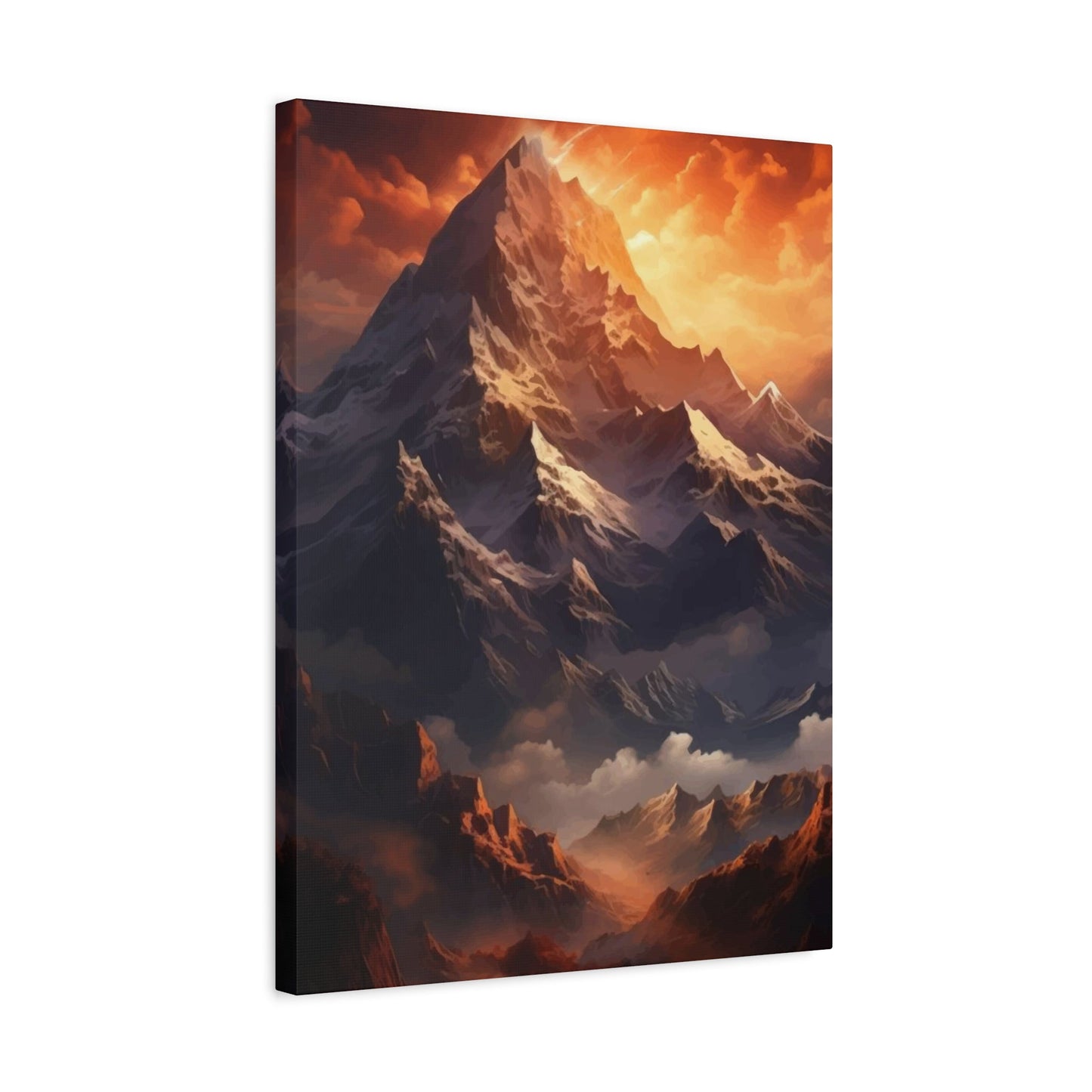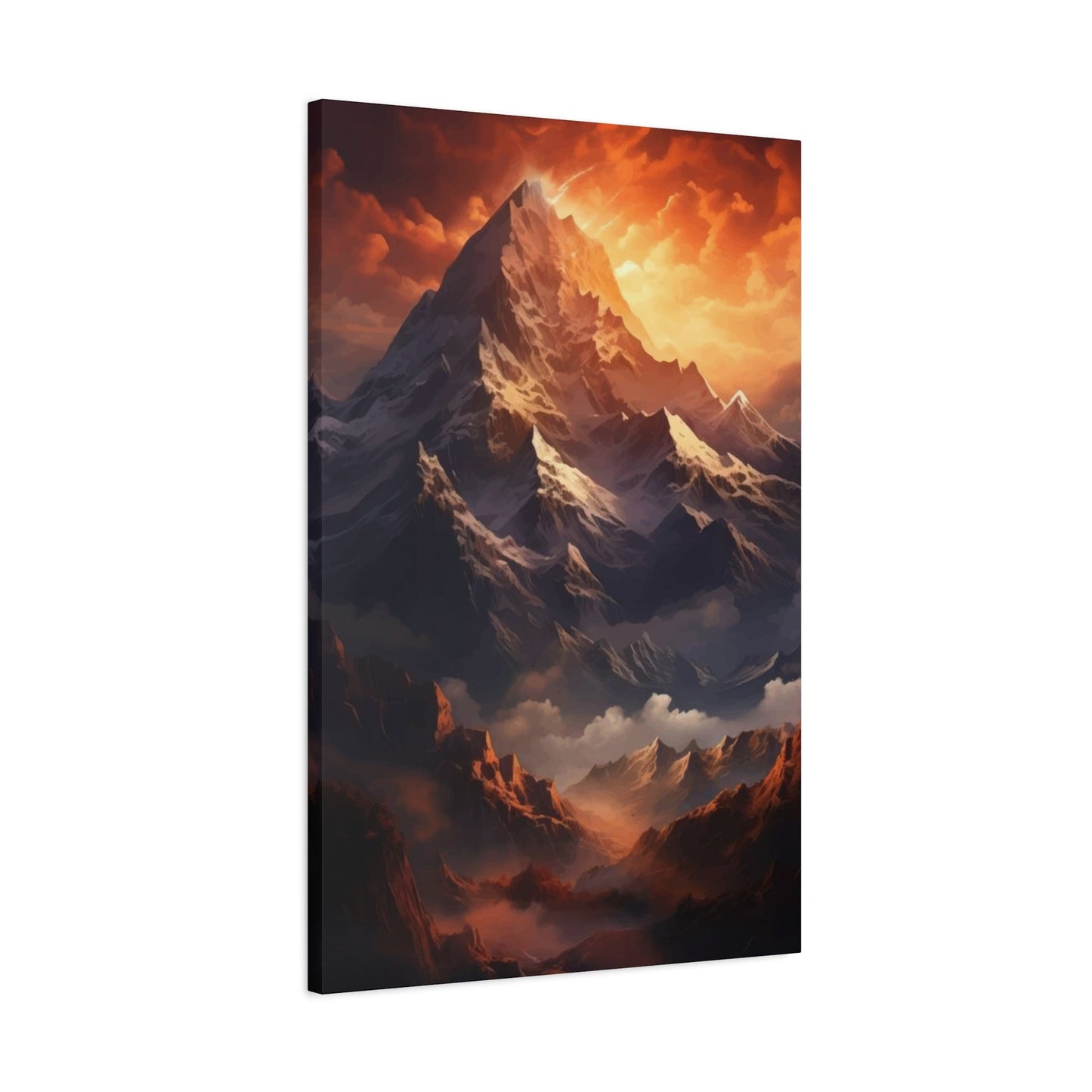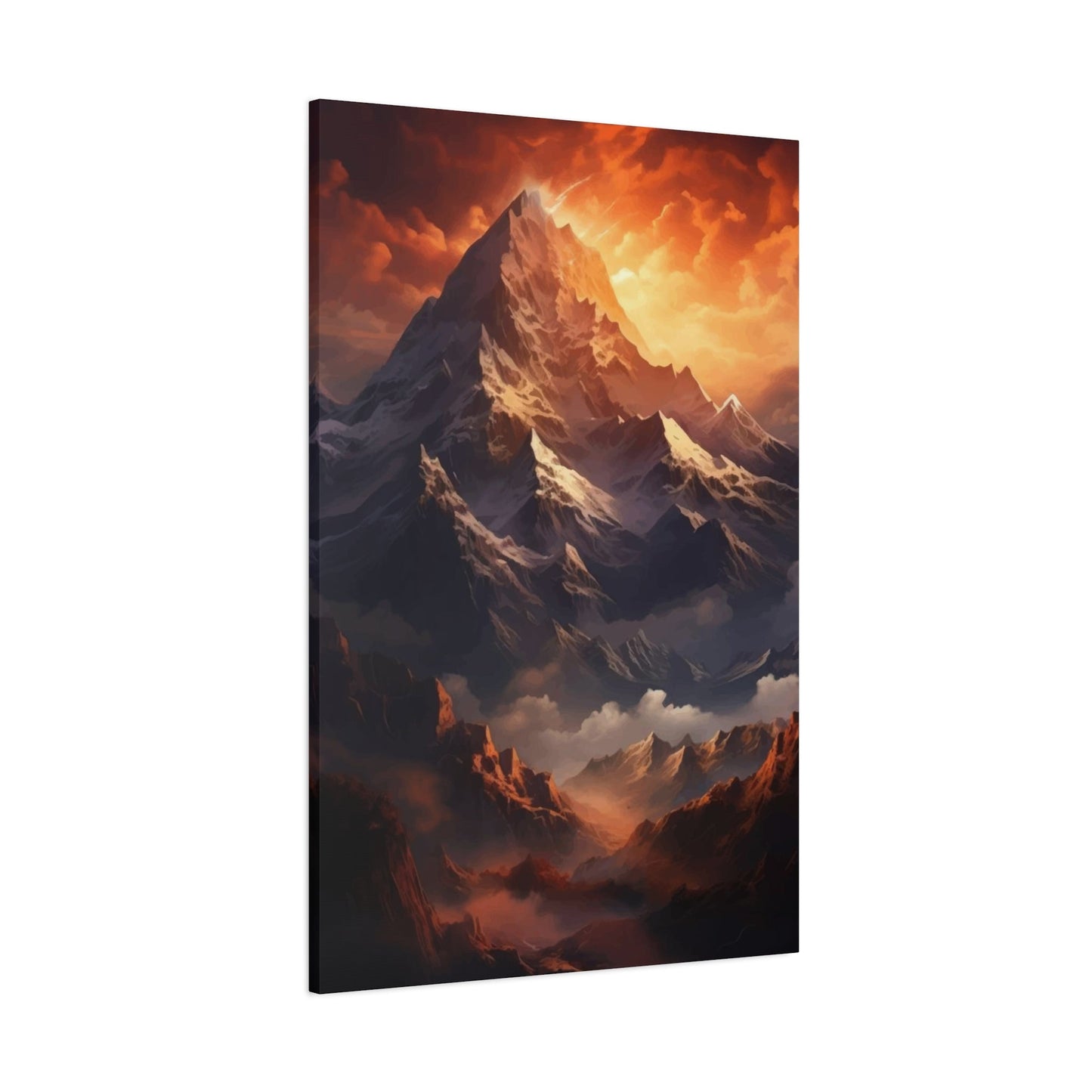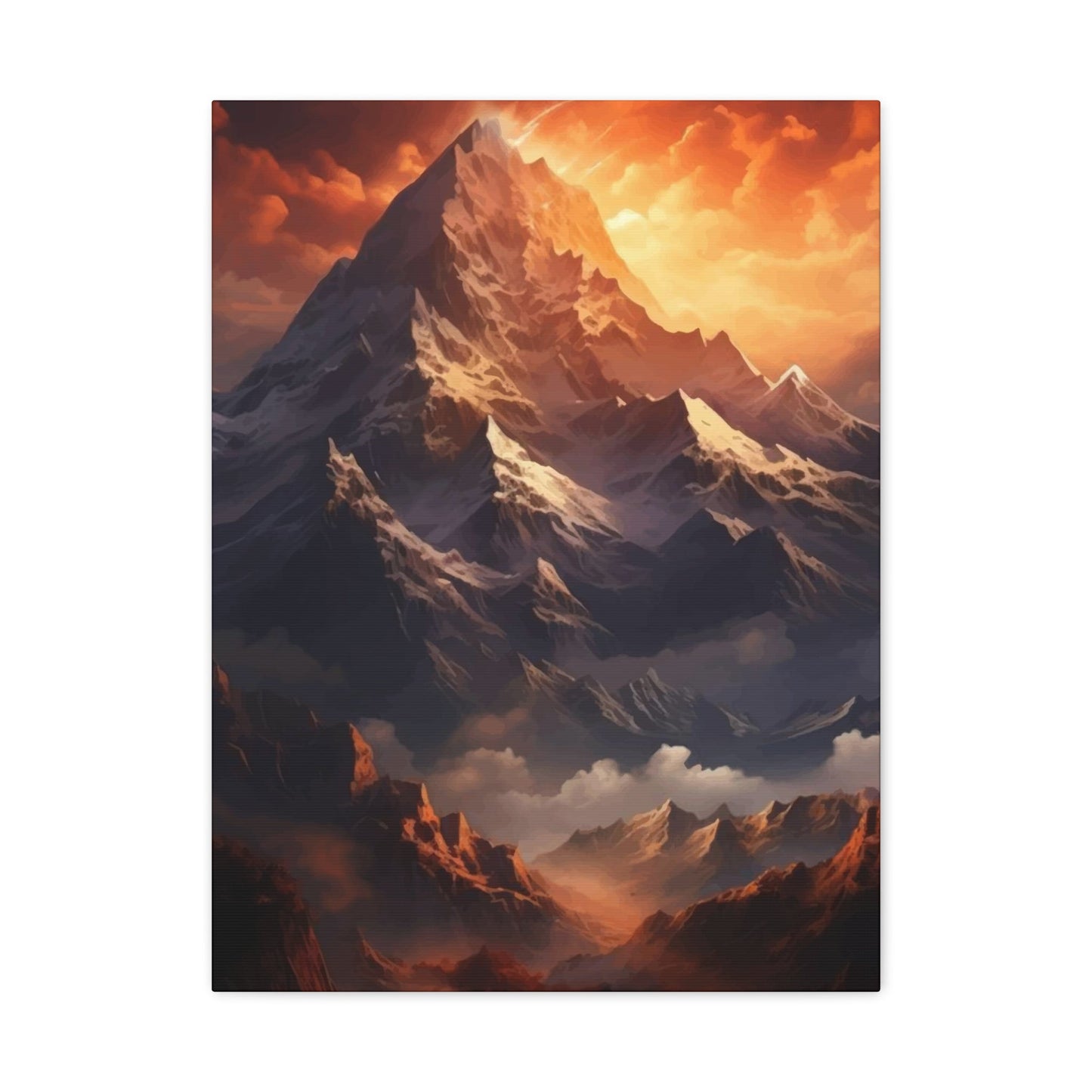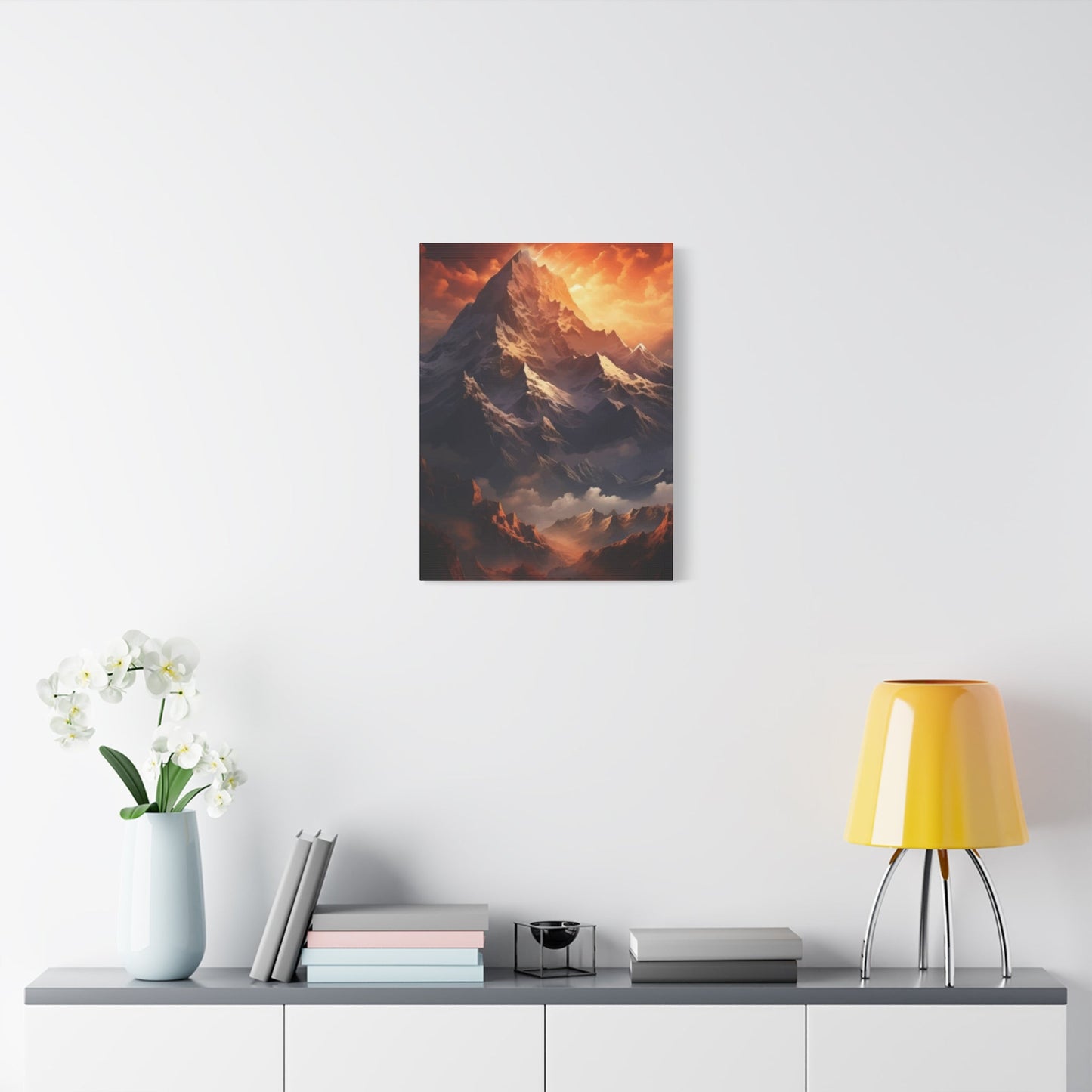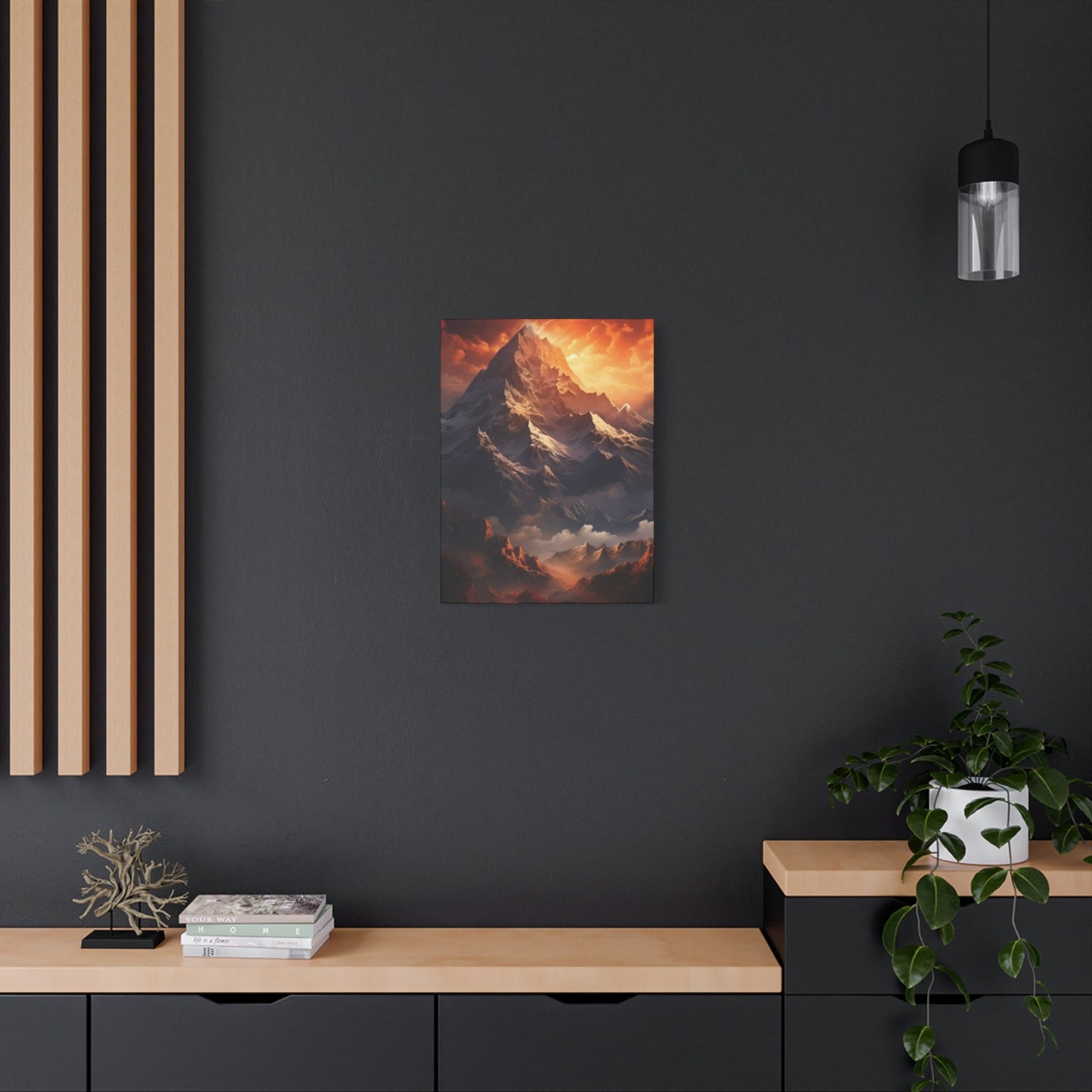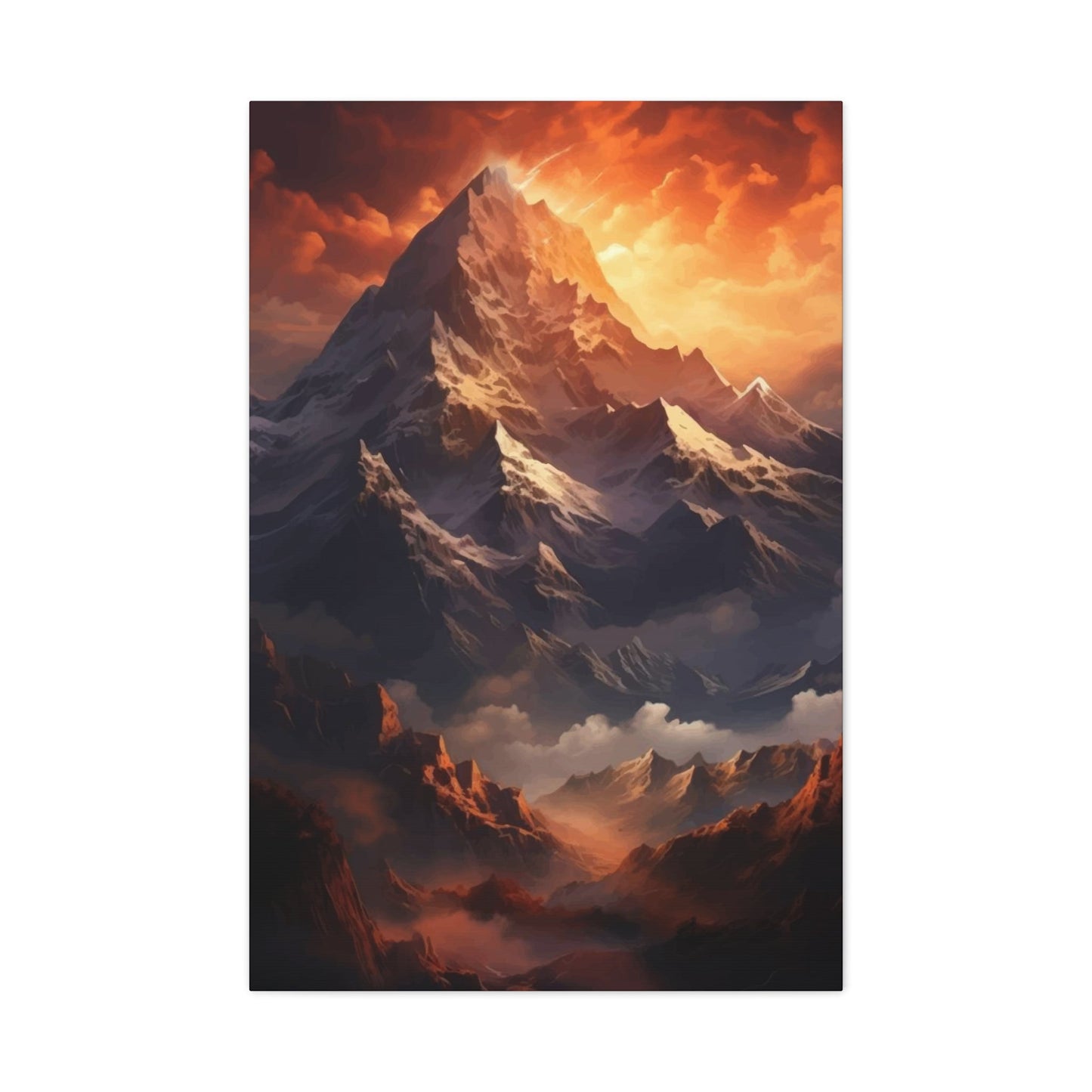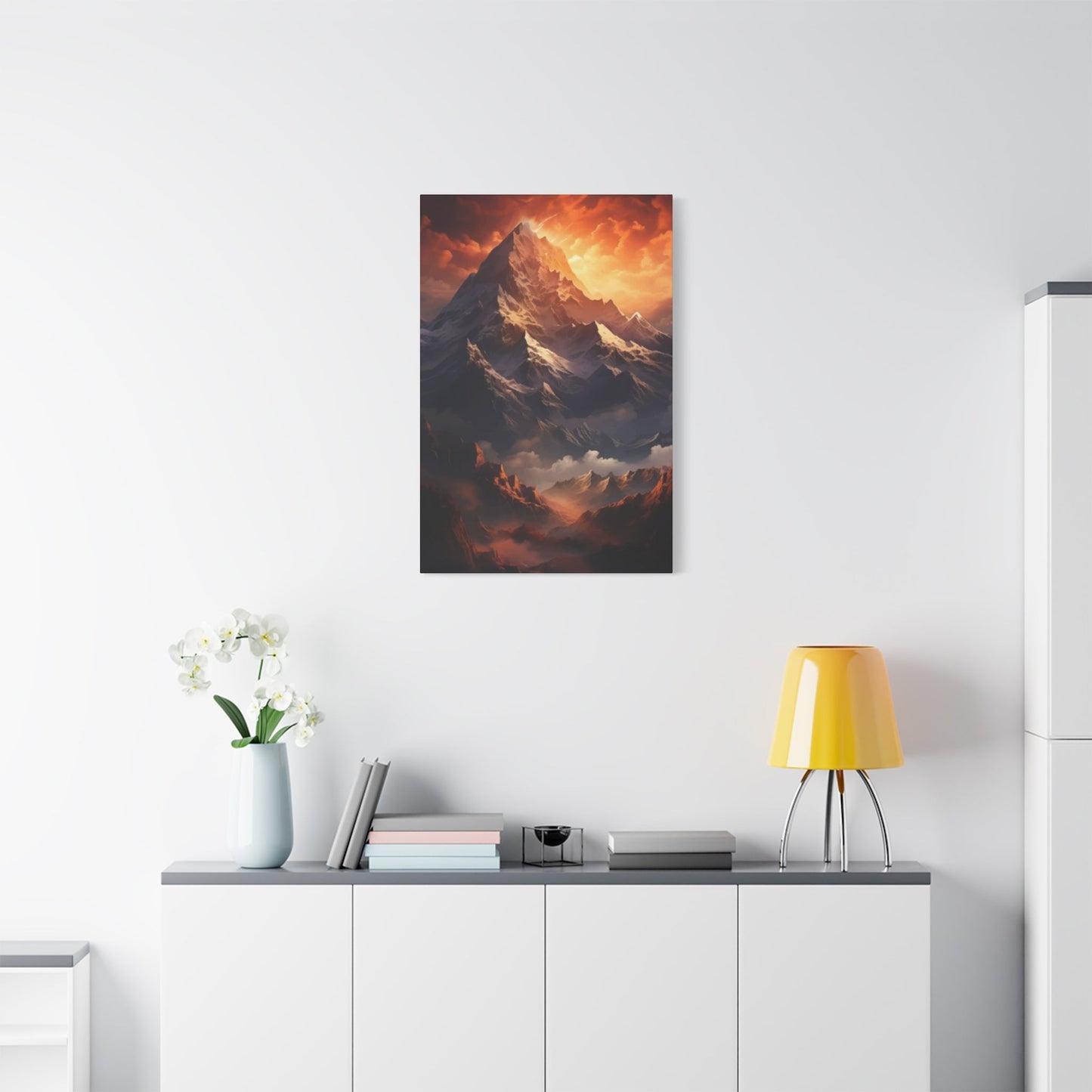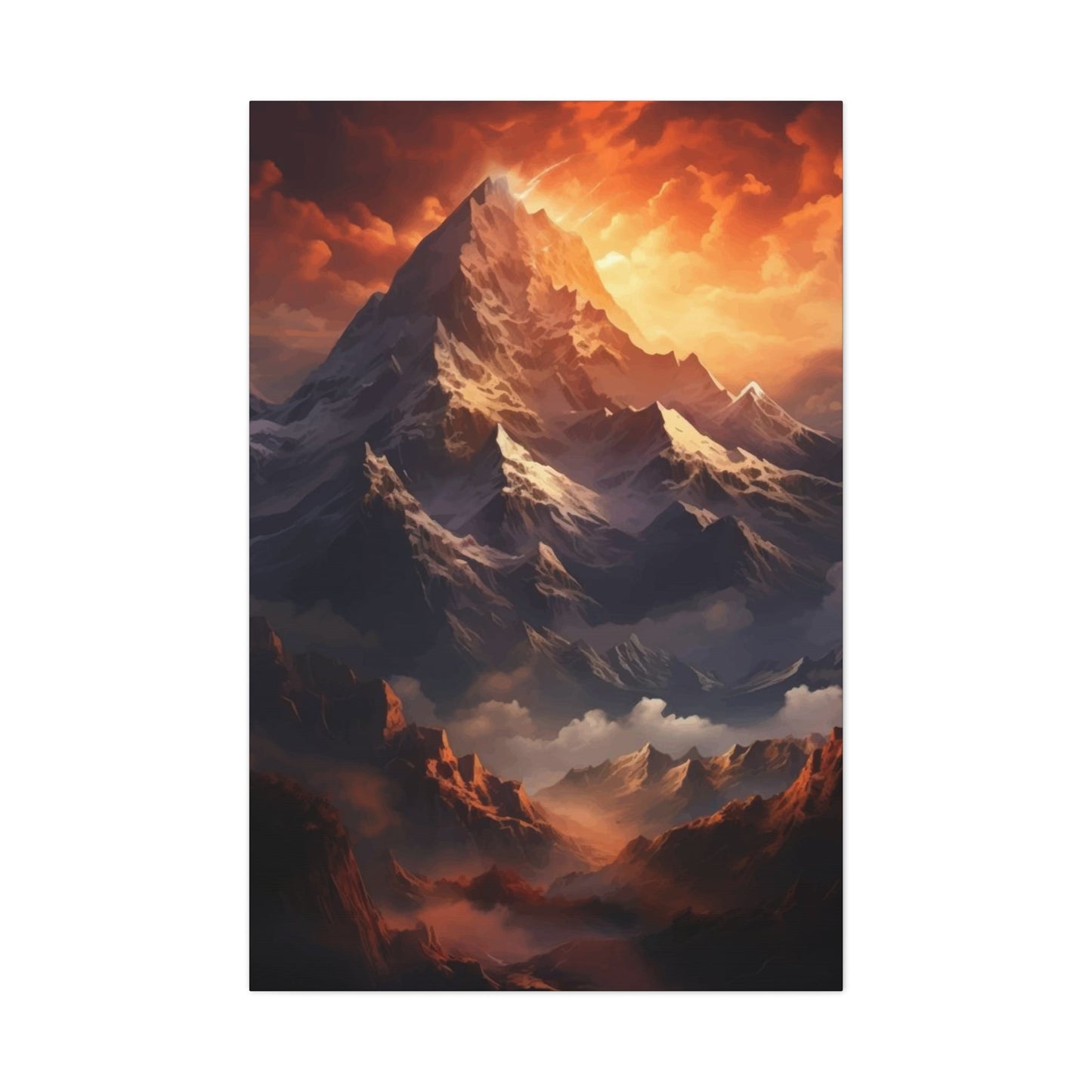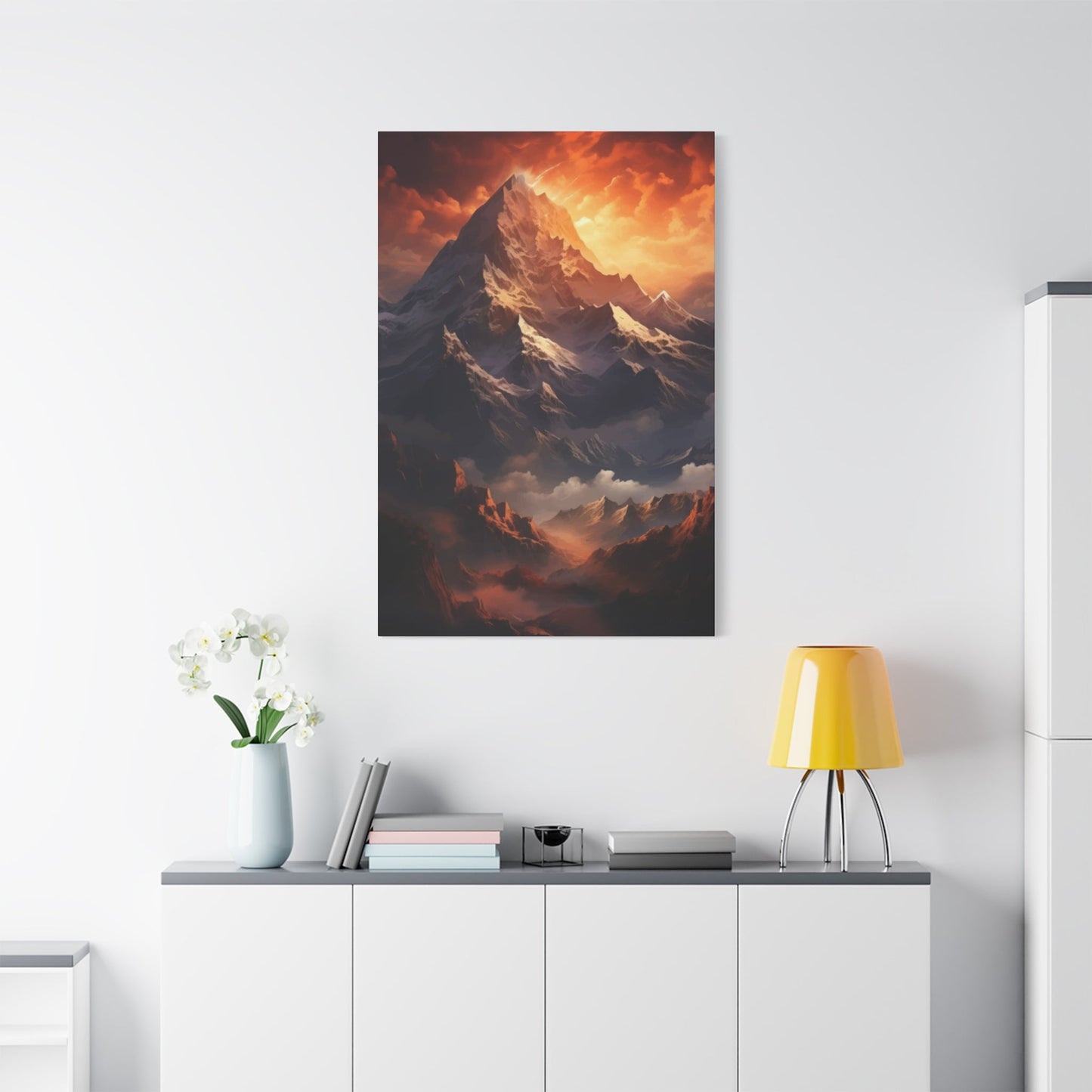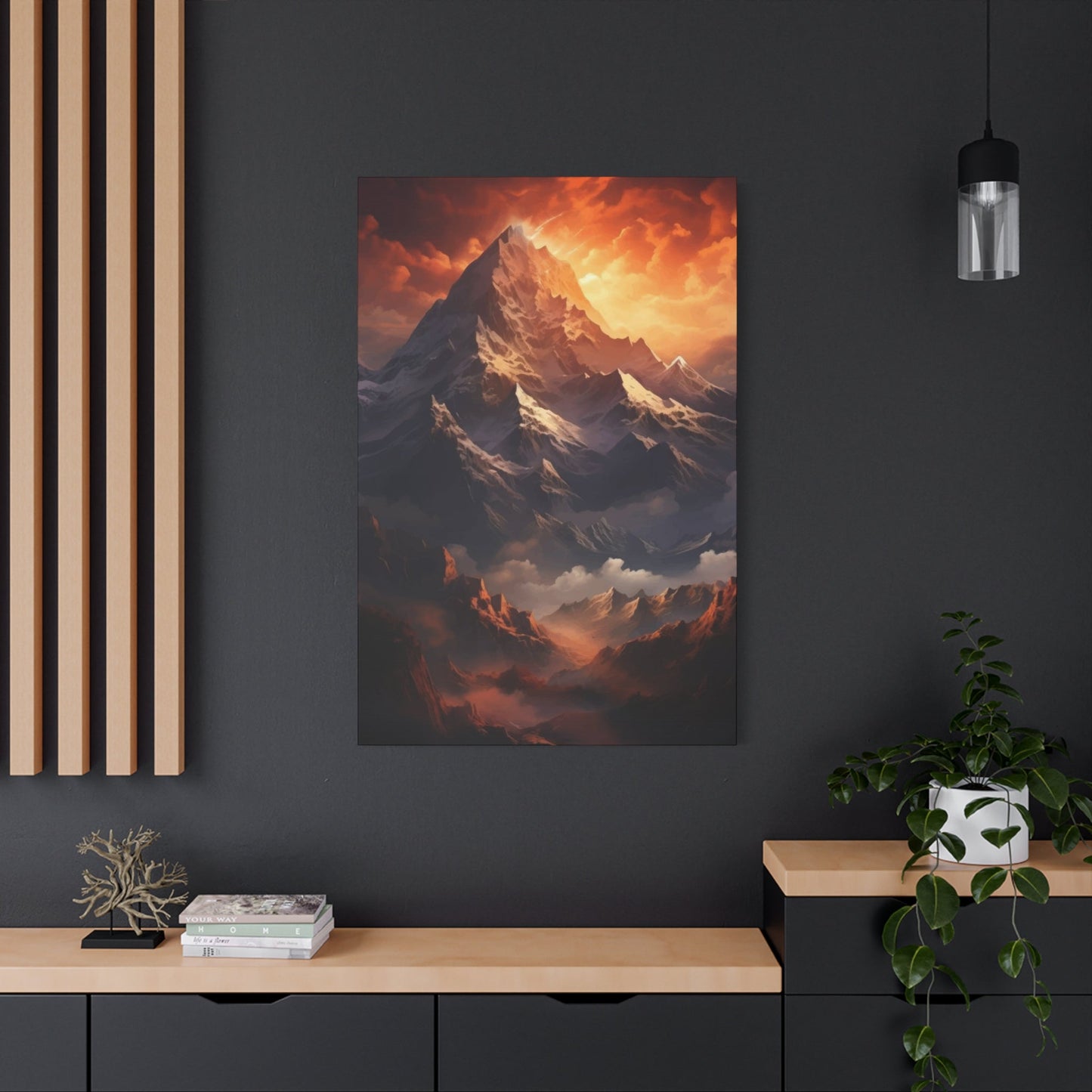Mountain Wall Art: Bringing Nature's Grandeur Into Your Living Environment
Mountain landscapes have captivated human imagination for centuries, representing strength, tranquility, and the raw beauty of untamed nature. When translated into wall art, these majestic formations bring an unparalleled sense of calm and adventure to any living environment. Mountain wall art serves as more than mere decoration; it functions as a portal to the great outdoors, offering daily inspiration and a connection to nature's most powerful expressions.
The appeal of mountain-themed artwork stems from its ability to evoke multiple emotions simultaneously. Whether depicting snow-capped peaks bathed in golden sunrise light or rugged cliffs shrouded in mysterious mist, these pieces create visual narratives that resonate with our deepest desires for exploration and peace. Contemporary homes increasingly embrace this artistic genre as homeowners seek ways to incorporate natural elements that promote well-being and mindfulness.
Modern mountain wall art encompasses various styles, from photorealistic landscapes that transport viewers to specific locations to abstract interpretations that capture the essence of mountainous terrain through color and form. This versatility makes mountain artwork suitable for diverse decorating preferences, architectural styles, and personal tastes. The enduring popularity of this theme reflects humanity's perpetual fascination with these geological giants and their symbolic representation of perseverance, stability, and natural wonder.
Discovering the Timeless Appeal of Mountain-Themed Artwork
Mountain wall art possesses an inherent timelessness that transcends fleeting decorating trends and style movements. Unlike many contemporary art forms that may feel dated after a few years, mountain landscapes maintain their relevance and visual impact across generations. This enduring quality stems from the fundamental human connection to natural environments and the psychological benefits associated with viewing natural imagery.
Research in environmental psychology demonstrates that exposure to nature-inspired artwork can reduce stress levels, improve mood, and enhance overall well-being. Mountain scenes specifically trigger responses associated with feelings of expansiveness, freedom, and contemplation. These psychological benefits make mountain wall art particularly valuable in today's fast-paced world, where many people spend significant time indoors and crave connections to natural environments.
The artistic interpretation of mountain landscapes has evolved significantly throughout history, from early romantic paintings that emphasized the sublime nature of these formations to contemporary digital art that explores new perspectives and color palettes. Each era brings fresh approaches to capturing the essence of mountainous terrain, ensuring that this artistic genre continues to evolve while maintaining its core appeal.
Traditional mountain artwork often focused on realistic representation, seeking to document specific locations or capture particular atmospheric conditions. Contemporary artists, however, increasingly experiment with abstraction, stylization, and digital manipulation to create unique interpretations that speak to modern sensibilities while honoring the fundamental majesty of mountain landscapes.
The emotional resonance of mountain imagery varies among individuals based on personal experiences, cultural backgrounds, and individual preferences. Some viewers are drawn to dramatic, imposing peaks that suggest challenge and adventure, while others prefer gentler mountain scenes that evoke peace and contemplation. This diversity of emotional response contributes to the broad appeal of mountain wall art and its ability to complement various personality types and lifestyle preferences.
Mountain wall art also serves as a form of armchair travel, allowing viewers to experience the beauty of distant locations without leaving their homes. For individuals who may not have the opportunity to visit mountain regions physically, artwork provides a means of connecting with these environments and experiencing their visual impact. This vicarious travel aspect adds another layer of value to mountain-themed artwork, making it particularly appealing to those with wanderlust or geographical limitations.
Exploring Diverse Styles of Mountain Canvas Prints
The world of mountain canvas prints offers an extensive range of artistic styles, each bringing unique characteristics and emotional qualities to the viewing experience. Photographic prints represent one of the most popular categories, featuring high-resolution images captured by professional landscape photographers who specialize in mountain environments. These prints offer incredible detail and color accuracy, allowing viewers to experience the texture of rock faces, the shimmer of mountain lakes, and the subtle gradations of light across distant peaks.
Digital art and graphic design interpretations of mountain scenes provide another compelling option for contemporary homes. These pieces often feature bold color palettes, simplified forms, and creative compositions that prioritize visual impact over literal representation. Digital mountain art can incorporate elements like geometric patterns, gradient effects, and stylized silhouettes that create modern interpretations of traditional landscape themes.
Watercolor-style mountain prints bring a softer, more romantic quality to mountain imagery. These pieces typically feature flowing, organic shapes and subtle color transitions that suggest rather than explicitly define mountain features. Watercolor interpretations work particularly well in residential settings where a gentler, more contemplative atmosphere is desired.
Abstract mountain art pushes the boundaries of traditional landscape representation, using color, form, and composition to evoke the feeling of mountain environments rather than their literal appearance. These pieces might feature bold brush strokes suggesting rocky textures, color fields representing atmospheric conditions, or geometric shapes that echo mountain silhouettes. Abstract mountain art offers maximum flexibility for integration with contemporary decorating schemes.
Vintage and retro-inspired mountain prints draw from mid-century travel posters and National Park Service artwork, featuring simplified graphics, limited color palettes, and nostalgic typography. These pieces appeal to individuals who appreciate both mountain imagery and vintage design aesthetics, creating connections to historical periods when outdoor recreation and nature appreciation were emerging as popular cultural movements.
Mixed media mountain artwork combines multiple artistic techniques and materials to create unique pieces that offer varied textures and visual interest. These might include elements like collage, painting, photography, and digital manipulation combined into cohesive compositions that explore mountain themes from multiple perspectives simultaneously.
Minimalist mountain prints focus on essential elements while eliminating unnecessary details, creating clean, uncluttered compositions that emphasize fundamental shapes and forms. These pieces work exceptionally well in contemporary homes where simplicity and visual clarity are prioritized over complexity and detail.
Incorporating Mountain Landscape Art Across Different Home Environments
The versatility of mountain wall art makes it suitable for virtually every room in the home, though certain considerations can help optimize placement for maximum visual impact and emotional resonance. Living rooms represent perhaps the most popular location for mountain artwork, as these gathering environments benefit from pieces that spark conversation and create focal points for social interaction.
Large-scale mountain prints work particularly well above sofas, mantels, or entertainment centers, where they can serve as dominant visual elements that anchor the entire room's design scheme. When selecting mountain art for living areas, consider the room's existing color palette and choose pieces that either complement or thoughtfully contrast with established tones. Mountain scenes with warm sunset colors can add energy to neutral environments, while cooler mountain imagery featuring blues and grays can balance rooms with warm color schemes.
Bedrooms provide ideal settings for mountain wall art that emphasizes tranquility and peaceful contemplation. Gentle mountain scenes featuring soft lighting, calm waters, or distant peaks create restful environments conducive to relaxation and sleep. Avoid overly dramatic or energetic mountain imagery in bedroom settings, as these might create stimulating rather than calming effects.
Home offices and study environments benefit from mountain artwork that inspires focus and creativity while providing visual relief from work-related stress. Mountain scenes suggesting vastness and perspective can help combat feelings of confinement often associated with indoor work environments. Consider placing mountain art in positions where it's visible during breaks from computer screens or detailed work tasks.
Kitchen and dining environments can accommodate mountain artwork that celebrates the connection between natural environments and nourishment. Mountain scenes featuring elements like flowing water, lush valleys, or seasonal changes can enhance the sensory experience of meal preparation and consumption. Choose pieces with appropriate color palettes that complement kitchen design schemes and food presentation.
Hallways and transitional areas provide excellent opportunities for creating mountain art galleries or displaying series of related pieces. These locations allow for creative arrangements that guide viewers through different mountain environments or seasonal variations. Consider using consistent framing or matting to create visual continuity while allowing individual pieces to maintain their unique characteristics.
Bathroom environments can benefit from mountain artwork that emphasizes water elements like mountain streams, alpine lakes, or waterfall scenes. The natural connection between water and mountain environments makes these combinations particularly harmonious, creating spa-like atmospheres that enhance relaxation and self-care routines.
Selecting Mountain Wall Art for Various Decorating Styles
Contemporary decorating styles embrace mountain wall art that emphasizes clean lines, bold contrasts, and sophisticated color palettes. Modern interpretations of mountain imagery often feature graphic elements, high contrast compositions, and innovative cropping that creates fresh perspectives on traditional landscape themes. These pieces typically work best when allowed to serve as statement elements rather than competing with other decorative objects for visual attention.
Traditional decorating schemes accommodate mountain artwork that honors classical landscape painting traditions while incorporating contemporary printing techniques and materials. Pieces featuring realistic mountain scenes with detailed atmospheric effects, traditional color palettes, and conventional compositional approaches complement established furniture styles and decorative elements commonly found in traditional homes.
Rustic and cabin-style decorating themes naturally align with mountain wall art, as both celebrate connections to natural environments and outdoor activities. Mountain artwork in these settings might feature more rugged, dramatic imagery that emphasizes the wild, untamed aspects of mountain environments. Consider pieces that incorporate elements like wildlife, dramatic weather conditions, or challenging terrain that reinforce the adventurous spirit associated with rustic lifestyle preferences.
Scandinavian and minimalist decorating approaches benefit from mountain art that prioritizes simplicity, functionality, and visual clarity. Mountain scenes featuring clean compositions, limited color palettes, and emphasis on form over detail complement the uncluttered aesthetic preferences associated with these design philosophies. Look for pieces that capture the essence of mountain environments without unnecessary complexity or decorative embellishment.
Industrial decorating styles can incorporate mountain artwork that features bold contrasts, dramatic lighting, and compositions that echo the structural elements common in industrial design. Mountain scenes with strong geometric elements, high contrast lighting, or urban mountain interfaces can bridge the gap between natural imagery and industrial aesthetic preferences.
Bohemian and eclectic decorating schemes provide opportunities for creative mountain art selections that might include pieces from various cultural perspectives, artistic techniques, or unconventional interpretations. These environments can accommodate mountain artwork that experiments with color, form, and cultural fusion while maintaining connections to natural themes and outdoor adventure.
Coastal and nautical decorating themes can successfully incorporate mountain artwork by focusing on pieces that emphasize water elements, atmospheric conditions, or distant mountain views that suggest maritime connections. Mountain scenes featuring coastal mountains, island peaks, or atmospheric conditions common to coastal regions create natural bridges between these seemingly different natural environments.
Creating Visual Impact Through Strategic Mountain Art Placement
The placement of mountain wall art significantly influences its visual impact and the overall atmosphere it creates within a given environment. Understanding principles of visual composition, sight lines, and spatial relationships helps optimize the effect of mountain artwork while ensuring it integrates harmoniously with existing decorative elements and architectural features.
Height considerations play a crucial role in mountain art placement, as proper positioning ensures comfortable viewing angles while maximizing the piece's presence within the room. Generally, mountain artwork should be positioned so that the center of the piece aligns with average eye level, typically around 57-60 inches from the floor. However, this guideline may require adjustment based on ceiling height, furniture placement, and the specific dimensions of the artwork itself.
Lighting significantly affects how mountain wall art appears and functions within a room. Natural lighting can enhance the colors and details of mountain scenes, but consideration must be given to preventing direct sunlight exposure that might cause fading or glare issues. Artificial lighting options, including picture lights, track lighting, or strategically placed lamps, can create dramatic effects that emphasize specific aspects of mountain imagery while providing flexibility for different times of day or seasonal changes.
Scale relationships between mountain artwork and surrounding elements require careful consideration to achieve visual balance and harmony. Large mountain pieces can overwhelm small furniture arrangements, while small prints may appear insignificant when placed above substantial furniture pieces. Consider the proportional relationships between wall art, furniture, and architectural elements to create compositions that feel intentional and well-balanced.
Grouping strategies for multiple mountain pieces can create gallery walls, storytelling sequences, or thematic collections that enhance the overall impact of individual pieces. When combining multiple mountain artworks, consider factors like consistent framing styles, complementary color palettes, and compositional relationships that create visual flow rather than competition between individual pieces.
Background considerations involve evaluating wall colors, textures, and patterns that might interact with mountain artwork. Neutral wall colors typically provide versatile backgrounds that allow mountain imagery to serve as the primary visual focus. However, creative color relationships can create sophisticated effects that enhance both the wall treatment and the artwork simultaneously.
Furniture relationships require evaluation of how mountain wall art interacts with nearby furniture pieces, decorative objects, and functional elements. Consider creating visual triangles or other compositional relationships that connect wall art with three-dimensional elements in the room, establishing integrated compositions rather than isolated decorative elements.
Understanding the Psychological Benefits of Mountain Imagery
The psychological impact of mountain wall art extends far beyond aesthetic considerations, offering measurable benefits for mental health, emotional well-being, and overall quality of life. Research in environmental psychology and neuroscience reveals that exposure to natural imagery, particularly mountain landscapes, triggers specific neurological responses associated with stress reduction, enhanced creativity, and improved cognitive function.
Stress reduction represents one of the most significant psychological benefits of mountain wall art. Mountain imagery activates the parasympathetic nervous system, which promotes relaxation responses and counters the effects of chronic stress. The vastness and permanence suggested by mountain landscapes provide psychological anchoring that helps individuals maintain perspective during challenging circumstances or overwhelming situations.
Attention restoration theory explains how natural imagery, including mountain scenes, helps combat mental fatigue and attention deficit often associated with contemporary urban lifestyles. Mountain wall art provides opportunities for "soft fascination," allowing the mind to rest and recover from the directed attention required for focused work, decision-making, and problem-solving activities.
Emotional regulation benefits from mountain imagery stem from its association with stability, permanence, and natural cycles that transcend immediate concerns and temporary difficulties. Mountain wall art can serve as visual reminders of larger perspectives, helping individuals maintain emotional equilibrium during periods of change, uncertainty, or personal challenge.
Creativity enhancement occurs when exposure to natural imagery, including mountain scenes, stimulates divergent thinking and innovative problem-solving approaches. The expansive qualities of mountain landscapes can inspire broader thinking patterns and encourage exploration of new possibilities or alternative solutions to existing challenges.
Sleep quality improvements have been documented in environments featuring calm, natural imagery like peaceful mountain scenes. The psychological association between natural environments and rest can help create bedroom atmospheres that promote relaxation and healthy sleep patterns, particularly for individuals who struggle with urban stress or technology-related sleep disruptions.
Social bonding benefits emerge when mountain wall art serves as conversation starters or shared focal points that facilitate meaningful interactions between family members, friends, or visitors. Mountain imagery often triggers memories of outdoor experiences, travel adventures, or aspirational goals that create opportunities for storytelling and relationship building.
Motivation and goal-setting support can result from mountain imagery that symbolizes achievement, perseverance, and the rewards of challenging endeavors. Mountain wall art can serve as daily reminders of personal goals, adventure aspirations, or the satisfaction that comes from overcoming obstacles and reaching new heights.
Seasonal Variations in Mountain Wall Art Selection
Seasonal considerations in mountain wall art selection allow homeowners to create dynamic environments that reflect changing natural cycles and maintain visual interest throughout the year. Understanding how different seasonal mountain imagery affects mood and atmosphere enables strategic art selection that enhances the psychological and emotional benefits associated with natural imagery.
Spring mountain artwork typically features emerging vegetation, flowing water from snowmelt, and the fresh, vibrant colors associated with renewal and growth. These pieces work particularly well during months when indoor environments might benefit from energy and optimism associated with seasonal transitions and new beginnings. Spring mountain scenes can counteract winter doldrums and provide motivation for outdoor activities and fresh starts.
Summer mountain imagery often emphasizes lush valleys, clear skies, and the accessibility of mountain environments during peak hiking and outdoor recreation seasons. These pieces celebrate the active, adventurous aspects of mountain environments while providing visual connections to outdoor activities that might be temporarily inaccessible due to geographic or weather limitations.
Autumn mountain scenes feature dramatic color displays, harvest themes, and the contemplative beauty associated with seasonal transitions. Fall mountain artwork can provide warmth and richness during months when outdoor colors begin to fade, creating indoor environments that extend the visual pleasure of autumn foliage and seasonal change.
Winter mountain art encompasses both the harsh beauty of snow-covered peaks and the cozy appeal of winter mountain environments. These pieces can provide visual cooling effects during warm months or enhance the contemplative, introspective atmosphere appropriate for winter seasons and indoor-focused activities.
Multi-seasonal collections allow homeowners to rotate mountain artwork throughout the year, creating environments that evolve with natural cycles while maintaining consistent thematic elements. This approach provides variety and renewed visual interest while accommodating the psychological need for environmental change and seasonal acknowledgment.
Transitional seasons like late winter or early spring can benefit from mountain artwork that captures the subtle changes and anticipatory qualities associated with these periods. Pieces featuring dawn light on mountain peaks, changing weather conditions, or the interplay between winter and spring elements can reflect the emotional complexity of transitional periods.
Year-round pieces feature timeless mountain imagery that transcends seasonal associations while maintaining visual appeal regardless of external weather conditions or calendar considerations. These pieces typically focus on fundamental mountain characteristics like form, scale, and atmospheric effects that remain constant across seasonal variations.
Color Psychology in Mountain Landscape Art
Color psychology plays a fundamental role in how mountain wall art affects viewers and influences the overall atmosphere of residential environments. Understanding the emotional and psychological associations of different color palettes in mountain imagery enables more intentional art selection that supports desired mood states and complements existing decorating schemes.
Blue dominates many mountain landscapes, appearing in skies, distant peaks, and atmospheric effects that create depth and perspective. Blue tones in mountain art promote feelings of calm, stability, and expansiveness while reducing anxiety and promoting contemplative states. Different shades of blue create varying effects, with deeper blues suggesting mystery and introspection, while lighter blues evoke openness and tranquility.
Green elements in mountain artwork, typically representing vegetation, valleys, and seasonal growth, contribute psychological associations with renewal, balance, and natural harmony. Green tones can reduce eye strain, promote relaxation, and create connections to growth and vitality. The presence of green in mountain scenes often makes them feel more approachable and life-affirming compared to stark, vegetation-free mountain imagery.
Earth tones, including browns, tans, and ochres commonly found in mountain rock formations and terrain, provide grounding effects that promote feelings of stability, security, and connection to natural elements. These colors can create warm, welcoming atmospheres while maintaining the strength and permanence associated with mountain imagery.
Gray tones, prevalent in rocky mountain surfaces and atmospheric conditions, offer sophisticated neutral qualities that complement contemporary decorating schemes while maintaining the dramatic impact of mountain landscapes. Gray-dominant mountain art works particularly well in modern environments where color restraint is preferred while natural imagery is desired.
White and snow-covered mountain imagery creates associations with purity, clarity, and pristine natural environments. White-dominant mountain scenes can visually expand smaller rooms while providing clean, fresh qualities that complement minimalist decorating approaches. However, excessive white in mountain art might feel cold or sterile without balancing warmer accent colors.
Warm tones, including oranges, reds, and yellows often found in sunrise or sunset mountain scenes, contribute energy, optimism, and emotional warmth to residential environments. These colors can counteract the potentially cool effects of blue and gray mountain imagery while maintaining connections to natural lighting conditions and atmospheric beauty.
Purple tones, sometimes appearing in mountain shadows, distant peaks, or atmospheric effects, add sophisticated, contemplative qualities that can create dramatic focal points without overwhelming other decorative elements. Purple in mountain imagery often suggests mystery, spirituality, and the transcendent qualities associated with high-altitude environments.
Considerations for Mountain Canvas Prints
Technical quality significantly impacts the visual effectiveness and longevity of mountain wall art, making understanding of printing processes, materials, and quality indicators essential for making informed purchasing decisions. High-quality mountain canvas prints require attention to resolution, color accuracy, material selection, and finishing techniques that ensure lasting beauty and visual impact.
Resolution requirements for mountain canvas prints depend on the intended display size and viewing distance, but generally higher resolution images produce superior detail and clarity that enhance the immersive qualities of mountain imagery. Professional mountain photography typically requires minimum resolutions of 300 DPI at the intended print size to maintain sharp detail in rock textures, atmospheric effects, and distant elements that contribute to the overall impact of mountain scenes.
Color management ensures that mountain artwork appears as intended by accurately reproducing the color relationships and tonal qualities that make mountain imagery compelling. Professional printing processes use color profiles and calibrated equipment to maintain consistency between original images and final prints, preserving the subtle color gradations and atmospheric effects that distinguish high-quality mountain photography.
Canvas material selection affects both the appearance and longevity of mountain wall art. High-quality canvas materials provide appropriate texture and archival stability while avoiding issues like sagging, color migration, or premature deterioration. Different canvas weights and weaves create varying surface textures that can enhance or detract from specific types of mountain imagery.
Stretching and mounting techniques influence how mountain canvas prints appear when displayed and how well they maintain their appearance over time. Professional mounting ensures proper tension distribution, prevents warping or buckling, and creates presentation-ready pieces that integrate seamlessly with residential decorating schemes.
Protective coatings and UV resistance treatments help preserve mountain wall art from fading, moisture damage, and other environmental factors that might degrade image quality over time. These treatments are particularly important for mountain imagery featuring delicate color gradations and atmospheric effects that might be particularly vulnerable to environmental damage.
Framing options for mountain canvas prints include traditional frames, floating mounts, and frameless presentations that each create different aesthetic effects while providing varying levels of protection and visual impact. The choice of framing approach should complement both the mountain imagery and the intended decorating environment while ensuring adequate protection for long-term display.
Size scaling considerations involve understanding how mountain imagery translates across different dimensions and how scale affects visual impact and appropriate placement within residential environments. Some mountain compositions work better at large scales that emphasize their dramatic qualities, while others maintain their effectiveness at smaller sizes that allow for more flexible placement options.
Mountain Wall Art
Proper maintenance and care extend the lifespan of mountain wall art while preserving its visual impact and investment value. Understanding appropriate cleaning techniques, environmental considerations, and preventive measures helps ensure that mountain artwork continues to provide aesthetic and psychological benefits for years to come.
Dust accumulation represents the most common maintenance challenge for mountain canvas prints, as airborne particles can settle on surface textures and gradually diminish color clarity and detail definition. Regular dusting using appropriate tools and techniques prevents accumulation while avoiding damage to canvas surfaces or protective coatings.
Light exposure management prevents fading and color degradation that can significantly impact the appearance of mountain wall art over time. Understanding the effects of different light sources, including natural sunlight and artificial lighting options, helps optimize display conditions while minimizing potential damage from excessive or inappropriate light exposure.
Humidity control maintains canvas stability and prevents moisture-related problems that might cause stretching, warping, or mold growth. Mountain wall art displayed in environments with significant humidity fluctuations may require additional protection or monitoring to maintain optimal condition and appearance.
Temperature stability prevents expansion and contraction cycles that might affect canvas tension, mounting systems, or protective treatments. Avoiding placement near heat sources, air conditioning vents, or areas with significant temperature variations helps maintain structural integrity and visual consistency.
Cleaning techniques for mountain canvas prints require appropriate materials and methods that effectively remove soil and contaminants without damaging canvas surfaces, printed images, or protective coatings. Professional cleaning services may be advisable for valuable or irreplaceable mountain artwork that requires specialized care.
Storage considerations apply when mountain wall art needs to be temporarily removed for moving, renovating, or seasonal rotation. Proper storage techniques protect artwork from physical damage, environmental hazards, and handling mishaps while maintaining readiness for future display.
Professional restoration services can address damage, fading, or deterioration that might occur despite careful maintenance and appropriate display conditions. Understanding when professional intervention is necessary helps preserve the investment value and aesthetic qualities of significant mountain artwork pieces.
Investment Value and Collectibility of Mountain Wall Art
Mountain wall art can represent both aesthetic investments and financial assets, particularly when selected thoughtfully and maintained appropriately. Understanding factors that influence the investment potential of mountain artwork helps collectors and homeowners make informed decisions that provide both immediate visual benefits and potential long-term value appreciation.
Artist reputation significantly influences the investment potential of mountain wall art, with pieces created by established landscape photographers or artists commanding higher initial prices and better long-term value retention. Researching artist backgrounds, exhibition histories, and market performance provides insight into investment potential beyond immediate aesthetic appeal.
Limited edition status creates scarcity value that can enhance both the exclusivity and investment potential of mountain wall art. Understanding edition sizes, numbering systems, and authenticity documentation helps evaluate the true rarity and potential collectibility of specific pieces.
Print quality and archival materials contribute to long-term value retention by ensuring that mountain artwork maintains its visual quality and physical integrity over time. Superior materials and professional printing processes may command higher initial prices but often provide better investment protection through enhanced durability and appearance retention.
Subject matter significance affects collectibility when mountain artwork depicts iconic locations, rare natural phenomena, or historically significant events or conditions. Mountain scenes featuring famous peaks, protected wilderness areas, or unique atmospheric conditions may develop enhanced value based on their documentary or commemorative significance.
Market trends in mountain wall art reflect broader cultural interests in outdoor recreation, environmental conservation, and biophilic design principles that emphasize connections between indoor environments and natural systems. Understanding these trends helps predict potential value development and identify emerging opportunities.
Authentication and documentation requirements become increasingly important as mountain artwork values appreciate or as artists develop enhanced reputations. Maintaining appropriate certificates, artist signatures, and provenance records protects investment value while ensuring accurate attribution and authenticity verification.
Insurance considerations for valuable mountain wall art include appropriate coverage levels, documentation requirements, and protection against specific risks like fading, damage, or theft. Professional appraisals may be necessary to establish appropriate insurance coverage and value documentation for significant pieces.
Seasonal Decorating Integration with Mountain Themes
Integrating mountain wall art into seasonal decorating schemes creates dynamic environments that reflect natural cycles while maintaining consistent thematic elements throughout the year. This approach allows homeowners to refresh their surroundings regularly while building upon established mountain themes that provide continuity and coherence.
Holiday integration opportunities arise when mountain imagery complements seasonal celebrations and traditional decorating approaches. Winter mountain scenes naturally align with Christmas and New Year decorating themes, while autumn mountain artwork can enhance Thanksgiving and harvest-related celebrations. Understanding these connections enables strategic art selection that serves multiple decorating functions.
Seasonal color palette coordination involves selecting mountain wall art that complements or thoughtfully contrasts with seasonal decorating colors. Warm-toned mountain scenes featuring sunset colors can enhance autumn decorating schemes, while cool mountain imagery featuring snow and ice can complement winter decorating approaches.
Texture relationships between mountain artwork and seasonal decorating materials create opportunities for sophisticated design integration. Mountain scenes with prominent rock textures might complement natural materials like wood, stone, or woven textiles commonly used in seasonal decorating schemes.
Lighting adaptation for seasonal decorating involves adjusting artificial lighting to enhance both mountain artwork and seasonal decorative elements simultaneously. Strategic lighting design can create dramatic effects that celebrate both mountain imagery and seasonal themes while maintaining visual harmony throughout changing decorating schemes.
Accessory coordination allows mountain wall art to serve as anchoring elements for seasonal decorating that might otherwise appear disconnected or temporary. Mountain artwork provides permanent visual foundations that can accommodate changing seasonal accessories while maintaining design continuity.
Scale relationships between permanent mountain artwork and temporary seasonal decorations require consideration to maintain visual balance and prevent competition between decorative elements. Understanding how to integrate seasonal decorations that complement rather than compete with mountain wall art enhances overall design effectiveness.
Activity alignment recognizes that different seasons bring different indoor activities and social patterns that might influence how mountain wall art functions within residential environments. Winter mountain scenes might enhance cozy indoor activities, while summer mountain imagery might inspire outdoor activity planning and adventure preparation.
Integration and Digital Mountain Art Options
Contemporary technology offers expanded options for mountain wall art through digital displays, smart integration, and innovative presentation methods that traditional printed artwork cannot provide. Understanding these technological possibilities enables homeowners to explore cutting-edge approaches to mountain imagery while maintaining the aesthetic and psychological benefits associated with mountain themes.
Digital display systems allow for rotating mountain imagery collections, seasonal changes, and real-time connections to actual mountain environments through webcams or satellite imagery. These systems provide ultimate flexibility in mountain art presentation while accommodating changing preferences and environmental conditions.
Smart home integration enables mountain wall art to respond to environmental conditions, time of day, or occupancy patterns through automated lighting, display changes, or interactive features. These capabilities can enhance the immersive qualities of mountain imagery while providing personalized experiences that adapt to individual preferences and schedules.
High-resolution display technology produces mountain imagery with unprecedented detail and color accuracy that may exceed traditional printing capabilities in certain applications. Advanced display systems can reproduce the full dynamic range and color gamut of original mountain photography while providing consistent appearance regardless of ambient lighting conditions.
Interactive capabilities allow viewers to explore mountain environments through touch interfaces, virtual reality integration, or augmented reality features that provide educational content, location information, or related imagery. These features can enhance the connection between viewers and mountain environments while providing entertainment and learning opportunities.
Energy efficiency considerations become important when evaluating digital mountain art options, as display systems require ongoing power consumption that traditional artwork does not. Understanding power requirements and efficiency ratings helps evaluate the long-term costs and environmental impacts of digital mountain art solutions.
Content management systems for digital mountain art require consideration of image sources, licensing requirements, and update procedures that ensure legal compliance and content freshness. Professional content services may provide managed collections specifically designed for residential display applications.
Integration challenges with existing decorating schemes may arise when digital mountain art systems require different mounting, power, and control considerations compared to traditional artwork. Planning for these requirements during initial installation helps ensure successful integration with established decorating approaches.
Conclusion
Mountain wall art represents far more than simple decoration; it serves as a bridge between indoor living environments and the natural world's most majestic expressions. Throughout this comprehensive exploration, we have examined the multifaceted ways mountain imagery enriches residential environments through psychological benefits, aesthetic enhancement, and emotional connection to natural landscapes that many people rarely experience directly.
The timeless appeal of mountain-themed artwork stems from fundamental human responses to natural environments that transcend cultural boundaries and personal preferences. Whether through realistic photography that captures specific locations in precise detail or abstract interpretations that distill the essence of mountainous terrain into color and form, mountain wall art provides daily opportunities for contemplation, inspiration, and stress relief that contribute meaningfully to overall well-being and quality of life.
The versatility of mountain imagery accommodates virtually every decorating style and personal preference, from contemporary minimalist approaches that emphasize clean lines and sophisticated color relationships to rustic cabin aesthetics that celebrate adventure and outdoor recreation. This adaptability ensures that mountain wall art remains relevant across changing decorating trends while providing consistent psychological and aesthetic benefits that justify its prominent place in residential design.
Technical considerations including print quality, materials selection, and proper care ensure that mountain artwork maintains its visual impact and investment value over time. Understanding these factors enables informed purchasing decisions that balance immediate aesthetic satisfaction with long-term durability and value retention. The integration of modern technology offers additional possibilities for dynamic, interactive mountain art experiences that may supplement or replace traditional printed artwork in certain applications.
The psychological benefits of mountain imagery, supported by research in environmental psychology and neuroscience, provide compelling justification for incorporating mountain wall art into residential environments beyond purely aesthetic considerations. Stress reduction, attention restoration, creativity enhancement, and emotional regulation represent measurable benefits that contribute to healthier, more satisfying living environments for individuals and families alike.
As we continue to spend increasing amounts of time in indoor environments, the importance of maintaining connections to natural landscapes through artwork becomes even more significant. Mountain wall art serves as a daily reminder of the natural world's beauty, power, and restorative qualities while providing accessible means for experiencing these benefits regardless of geographic location or physical limitations that might prevent direct mountain experiences.
The investment potential of carefully selected mountain artwork adds another dimension of value that extends beyond immediate decorating benefits. Understanding factors that influence collectibility, value retention, and market trends enables strategic selections that provide both aesthetic satisfaction and potential financial benefits over time.
Ultimately, mountain wall art represents an investment in well-being, aesthetic satisfaction, and connection to natural environments that enhance the quality of daily life in measurable ways. Whether selecting a single statement piece or developing comprehensive collections that evolve over time, mountain imagery provides endless opportunities for exploration, discovery, and personal expression that enriches residential environments while honoring humanity's enduring fascination with these geological monuments to natural power and beauty.













